Ear biscuits
Savoury, moreish biscuits for gifting this Lunar New Year
Ear biscuits are something out of my parents’ and grandparents’ generation. Ovens were not mainstream in Singapore until recent decades, so many local desserts and snacks were made on the stovetop, mostly by deep-frying or steaming. Known also as pig ear biscuits or cow ear biscuits, these deep-fried snacks are animal-free but named for their striated and golden brown appearance.
When I was back in Singapore to launch Plantasia last October, I made a stop at the hawker stall Chai Wee Cuttlefish. Started in 1978, the business came to my attention when the third-generation owner of the business, Mr Cornelius Tan, recently joined his parents at the stall. The family has two products - roasted cuttlefish and ear biscuits - and both are exemplary. The roasted cuttlefish comes glazed with a sweet and spicy seasoning, and the sheets are so thin and brittle that they can be described as crisps. The ear biscuits are the more exclusive offering - because they are time- and labour-intensive to make, they are only available for purchase as a set with the cuttlefish.
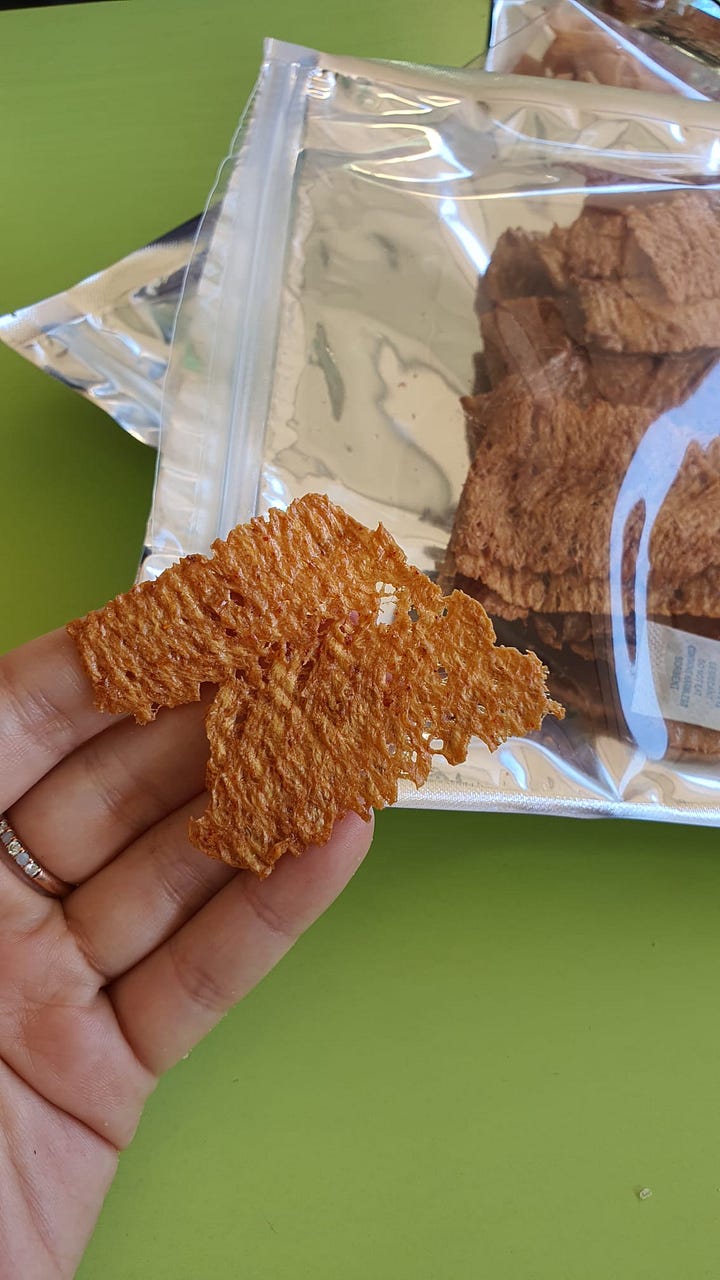
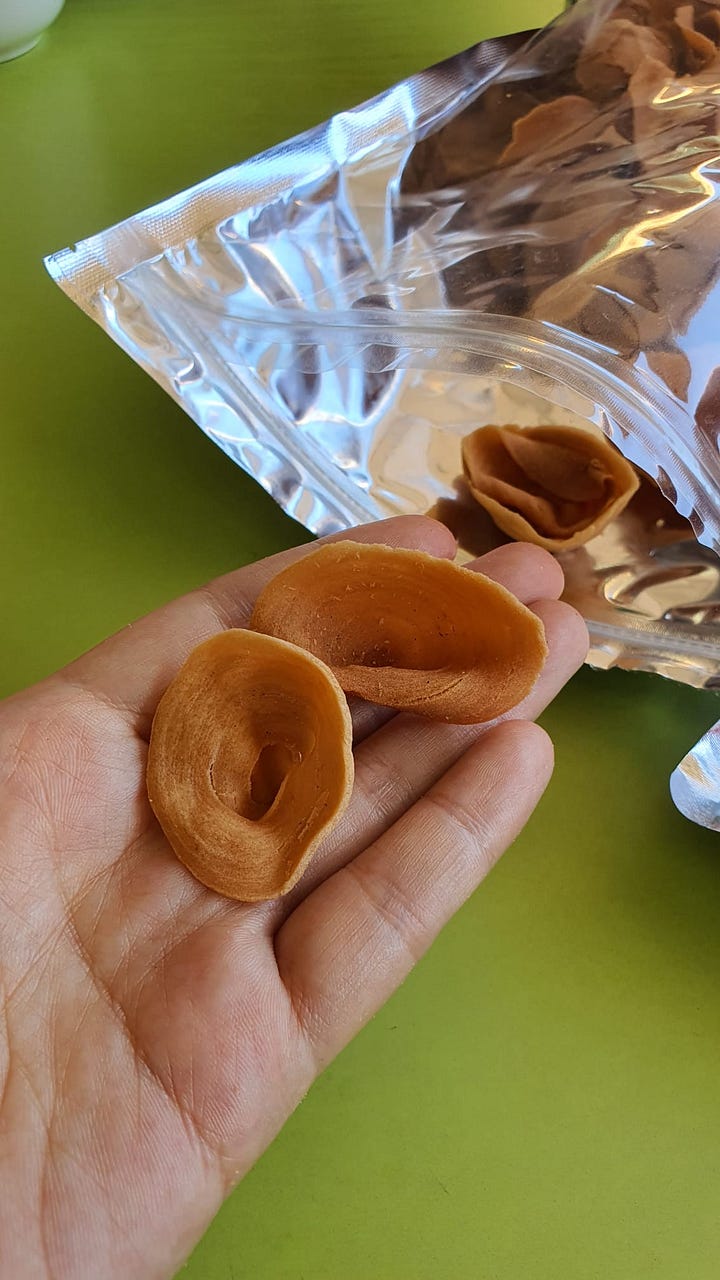
Ear biscuits can suffer from being too tough, but by leveraging on Tan’s expertise as an engineer and using a machine to cut the dough (see the video below for the process of how these are made at the stall), the family avoids this pitfall. Their biscuits were the thinnest and crunchiest specimens that I’ve ever eaten, with none of the greasy oil flavour that plagues fried goods. After tasting them, I bought 4 more sets and gifted them to members on both sides of my family. It went down a storm - my not-so-mobile paternal grandmother asked my aunt to make a trip to the hawker centre to purchase more, and my mom’s sister who is a notoriously picky eater enquired where I’d purchased them.
It took me a few trials to develop a recipe for ear biscuits that come close to Chai Wee’s. Some ear biscuits are flavoured with red fermented tofu, and I have also seen variants where the plain and red tofu dough are rolled together to form pinwheel cookies (like Vietnamese banh tai heo). But when I asked my family if they prefer the red tofu-flavoured biscuits, the answer was a unanimous no. After some internet sleuthing, I discovered that what sets the Chai Wee ear biscuit apart in terms of flavour is the use of fish sauce as seasoning. While typical recipes call for plain flour in making the dough, I’ve found that adding a quantity of starch allows the biscuits to fry up noticeably lighter and crisper due to the lack of gluten. The ingredients are brought together with just enough water to form a stiff dough:
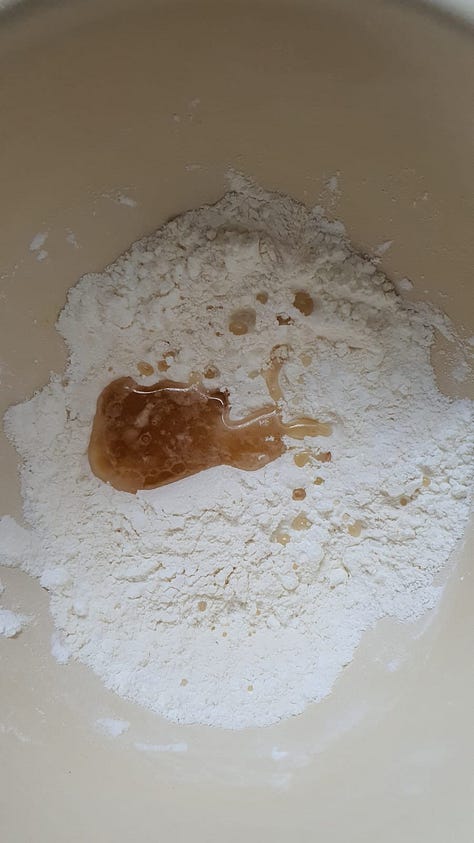
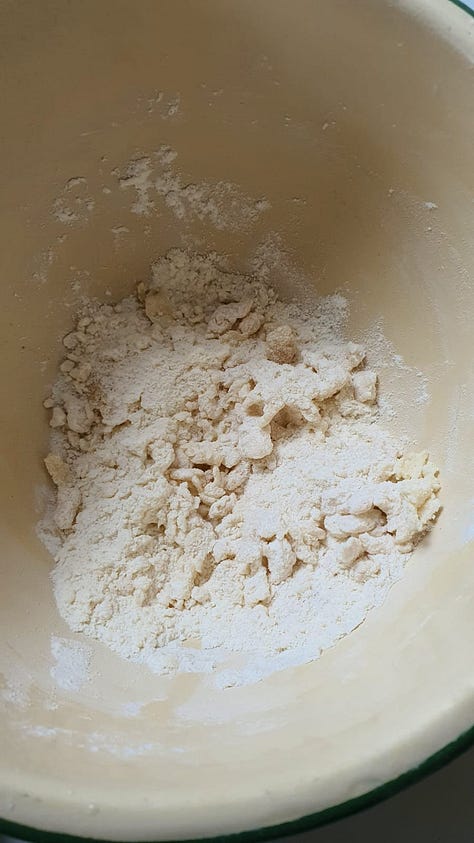
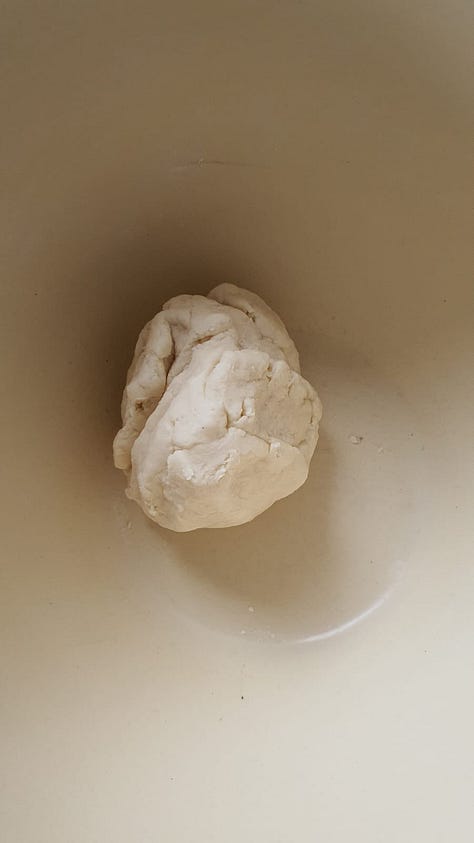
The whorls in the cookies are formed through a simple process of rolling the dough out into a rectangle, brushing it with water, then rolling it up tightly. The dough is then sliced extremely thinly with a sharp knife. This is the main difficulty and most time-consuming step, but placing the dough in the freezer for an hour or so helps to firm up the dough:
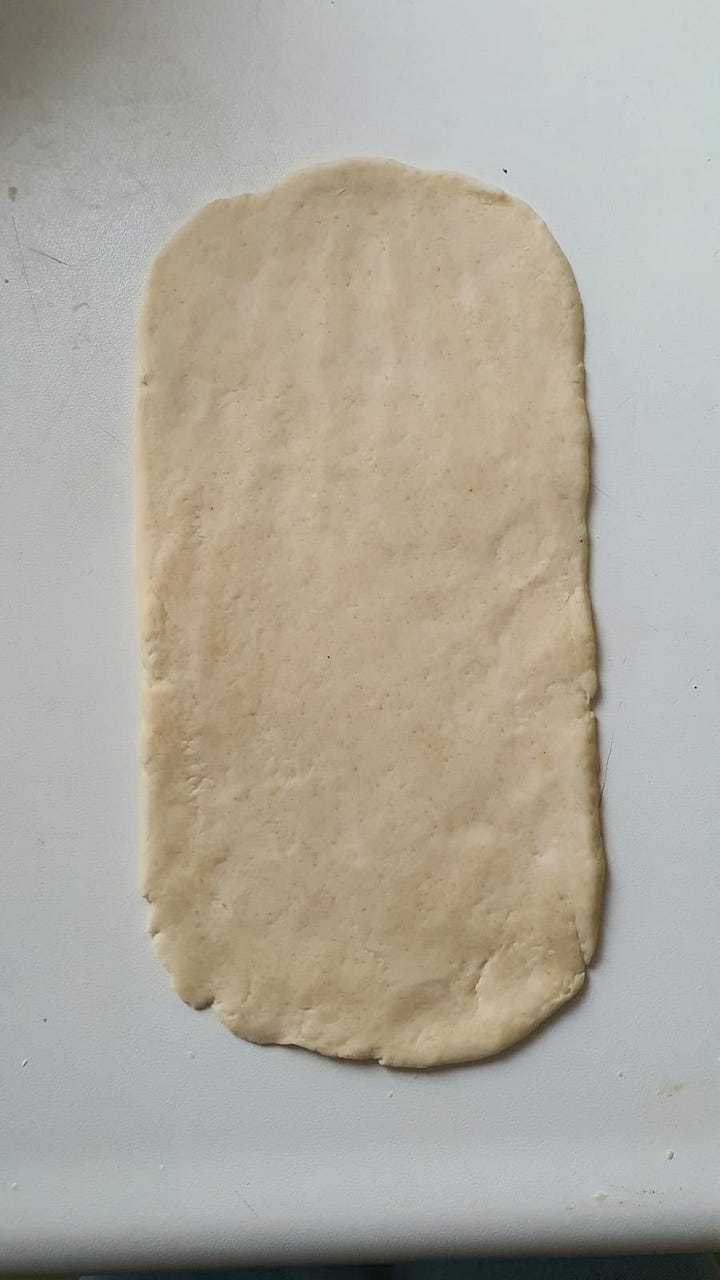
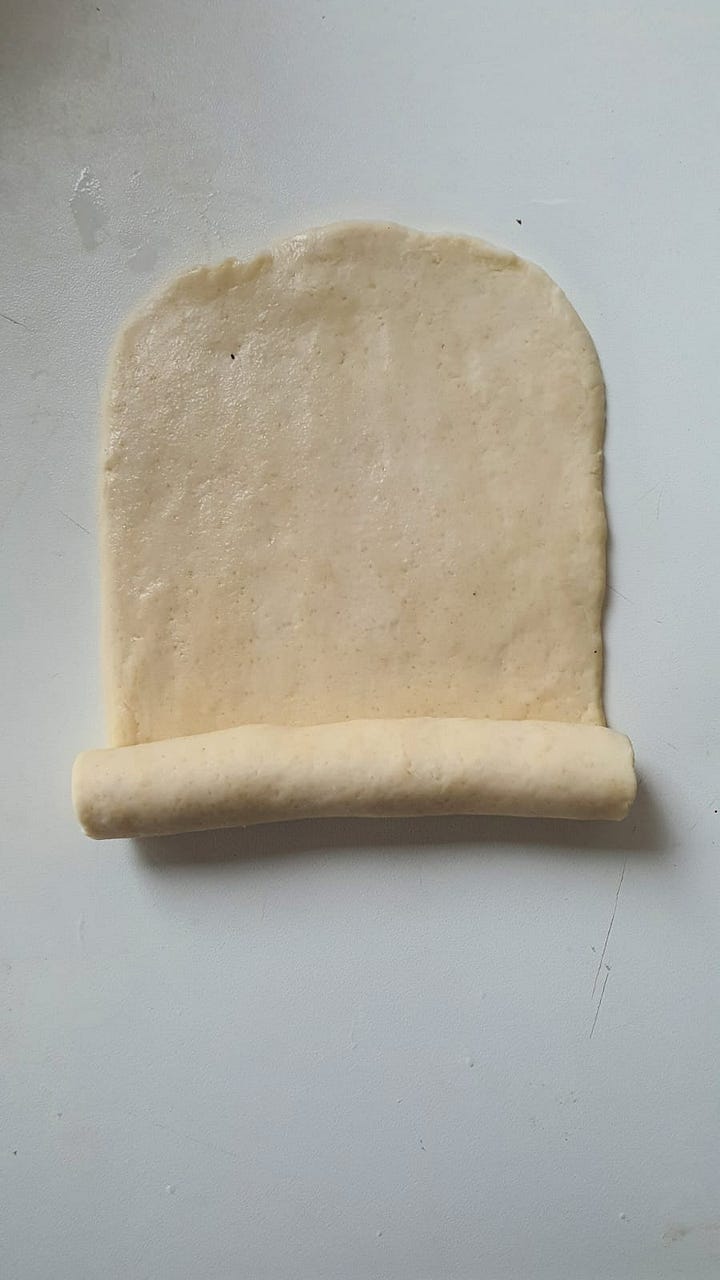
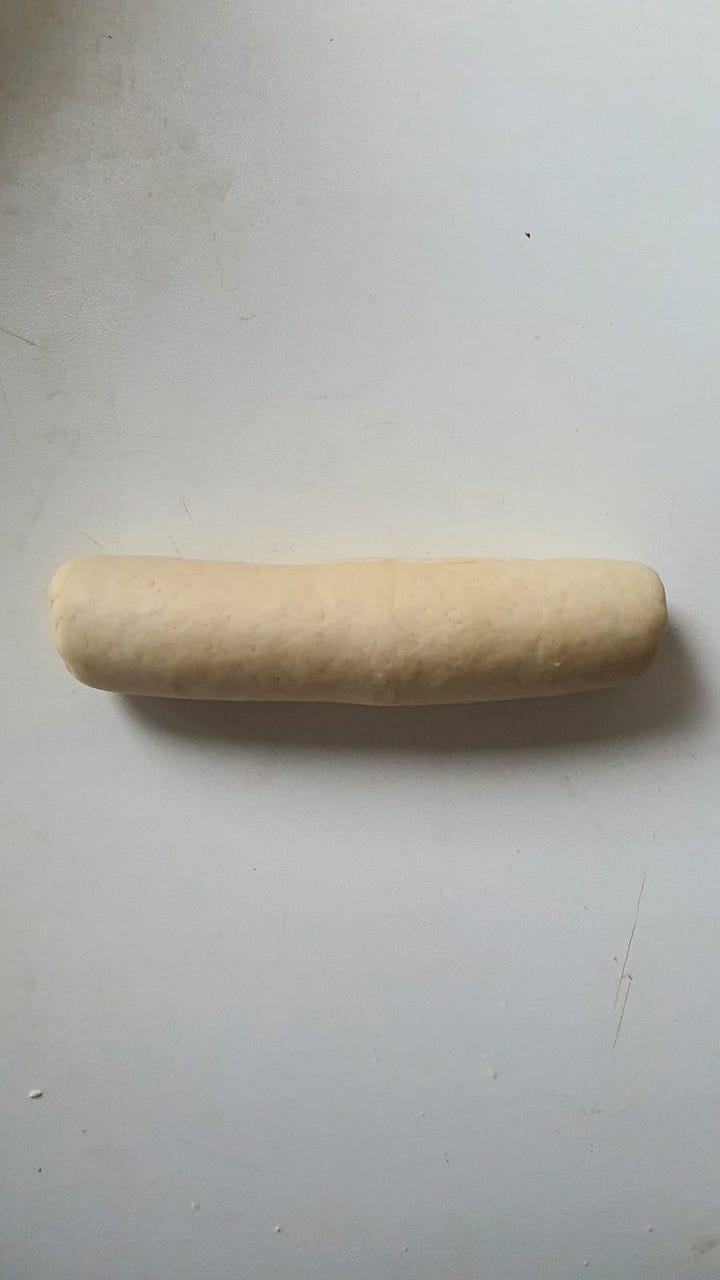
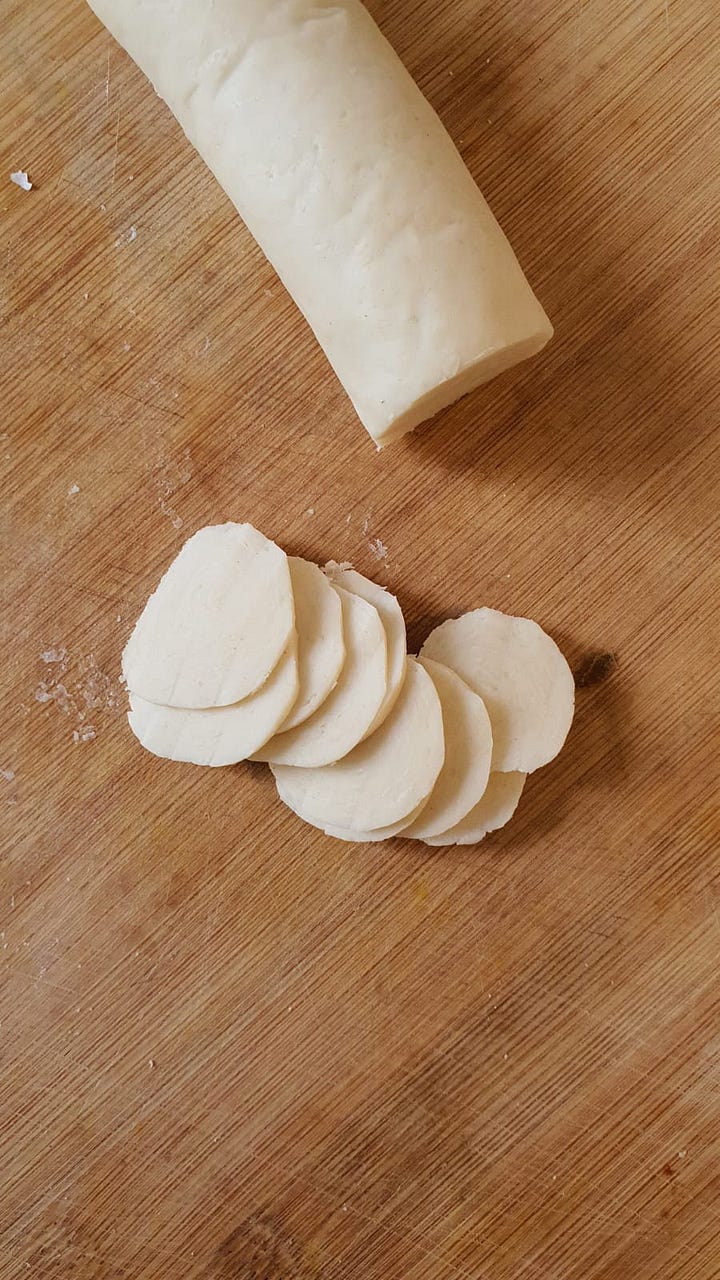
The sliced rounds are added to hot oil and fried until they are light golden brown. The rounds bend slightly as they fry, taking on concave shapes, and the striations become clearly visible. Because Chai Wee’s biscuits are fried in coconut oil, I opted for that over the much cheaper vegetable oil. The flavour of coconut oil in these cookies is subtle, but makes a marked difference. As tiny as infants’ ears, you can easily go through a lot of these - I made 60 biscuits and they were all consumed in moments:
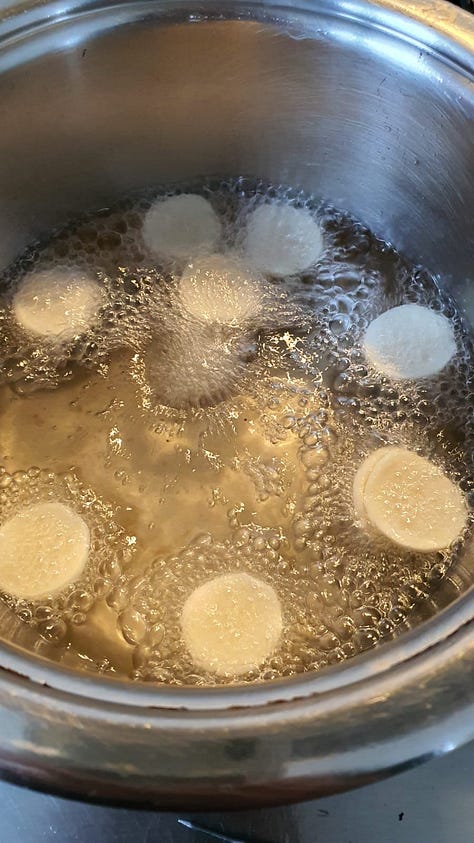
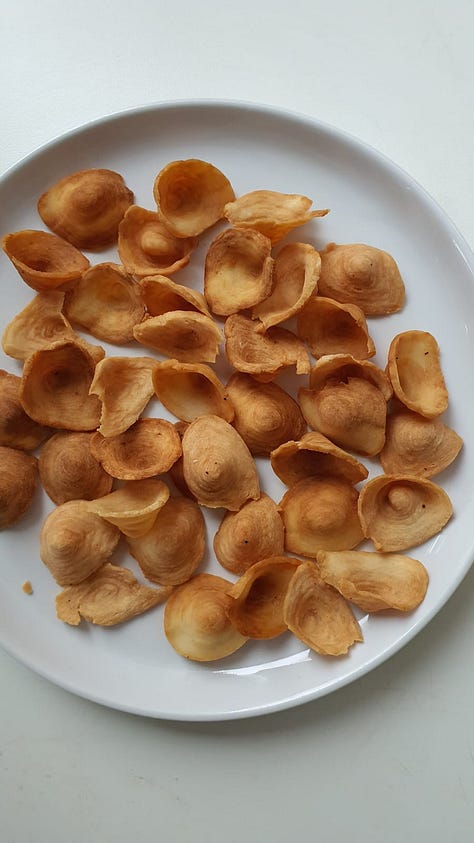
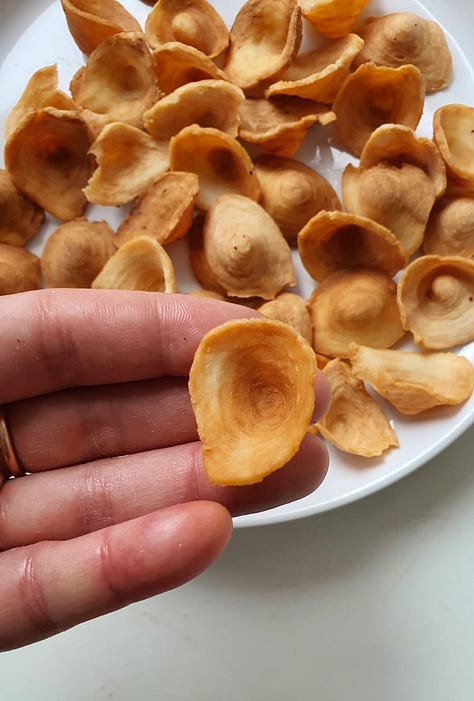
Though these cookies are commercially available year round in Singapore, they are traditionally made and gifted during Lunar New Year. Their history go back to the Warring States period in China. When states formed an alliance with one another, the leader of the alliance would cut off a cow’s ear and smear the blood onto the other state representatives as a sign of their covenant. The idiom 手執牛耳 (‘to hold a cow’s ear in one’s hand’) that came out of this ritual denotes someone who occupies a leadership position, and ear biscuits have since become a symbolic expression of one’s blessings and wishes for the recipient to come in first place in their endeavours. If you are already beginning to make cookies for Lunar New Year this year, these biscuits would make great gifts for those who don’t have a sweet tooth. Otherwise, you can check out this four-part deep-dive that I wrote two years ago for pineapple tarts!
Ear Biscuits
MAKES 120 BISCUITS OR 6 SERVINGS


